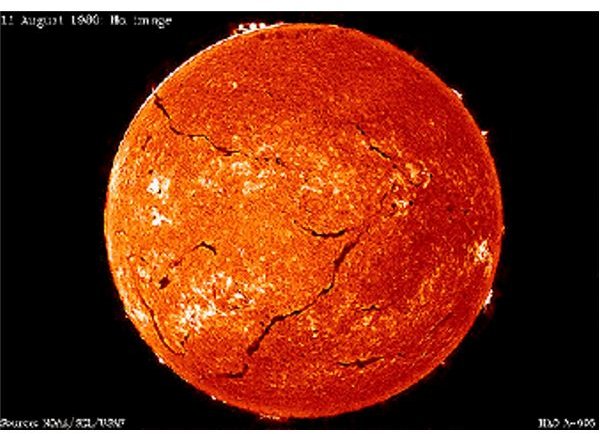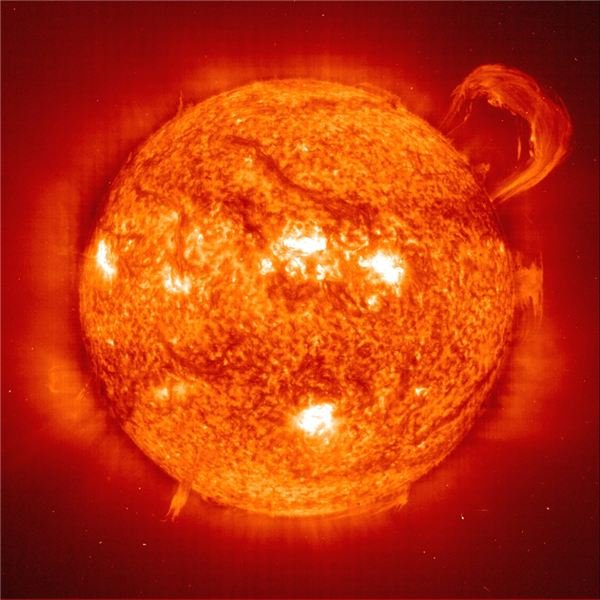Answers to, What is the Sun Prominence?
An Incredible Display of Solar Violence
When astronomers first began looking at the Sun, one of the first features that caught their eyes were giant, fiery loops shooting into space, but still connected to the Sun’s surface at both ends. They called these phenomena ‘prominences.’
What is a Sun prominence? It took astronomers a hundred years to answer that, but today, thanks to solar probes and large telescopes, we have a good handle on the mechanisms that produce these incredible displays.
The photo below was taken by the SOlar and Heliospheric Observatory (SOHO). The prominence extends into space several thousand miles, almost a hundred thousand km. Some have been observed to reach one million km into space.
Prominences are explosions of plasma shot into space by magnetic disruptions around sunspots. The ends of the prominence will be near two sunspots of opposite polarity. What happens is the magnetic fields interfere with each other. They get twisted and plasma between the two breaks free and rockets into space at velocities as high as 1300 km/sec. The plasma is still bound to the Sun by the fields however, and cannot escape.
Prominences are not short lived. They can last several weeks, even several months.
Not Out on a Limb
Prominences do not occur just on the Sun’s limb. They occur all over the Chromosphere. We see them as the brilliant explosions on the limb because they are viewed against the blackness of space. When they occur on the disk of the Sun, they are cooler than the Chromosphere, and so appear as dark lines against the brighter disk. Still, they are the same thing.
On the disk, they are called filaments. Like their limb sibling, they can last for weeks or months. Both collapse only when the magnetic field maintaining them becomes unstable. This can happen if a new magnetic field begins to work its way to the surface beneath the filament or prominence.

Not Without Danger
Despite their beauty, prominences and filaments pose danger for the Earth. A large prominence can disrupt communications on our planet because of the radiation and high energy electrons it sends out. It can also kill power grids by inducing extremely high currents in them and literally burning them out.
And if they collapse suddenly, they can produce even more devastating results here. We mentioned earlier about new magnetic fields working their way up under a filament. This can cause a sudden collapse of a filament or prominence, and result in an explosion called a Hyder flare.
Such an explosion occurred on Oct. 9, 2000. The result was a ‘top of the line’ solar flare, and worse, a full halo coronal mass ejection (CME). The CME struck the Earth three days later.
Fortunately there was no serious effect on our lives.
Sources and Credits
Sources:
University of Tennesee at Knoxville: https://csep10.phys.utk.edu/astr162/lect/sun/prominences.html
University of Montanta: https://solar.physics.montana.edu/ypop/Program/hfilament.htmlhttp:/
Spaceweather.com: https://www.spaceweather.com/glossary/filaments.html
Credits:
SOHO Image: https://antwrp.gsfc.nasa.gov/apod/ap060416.html
